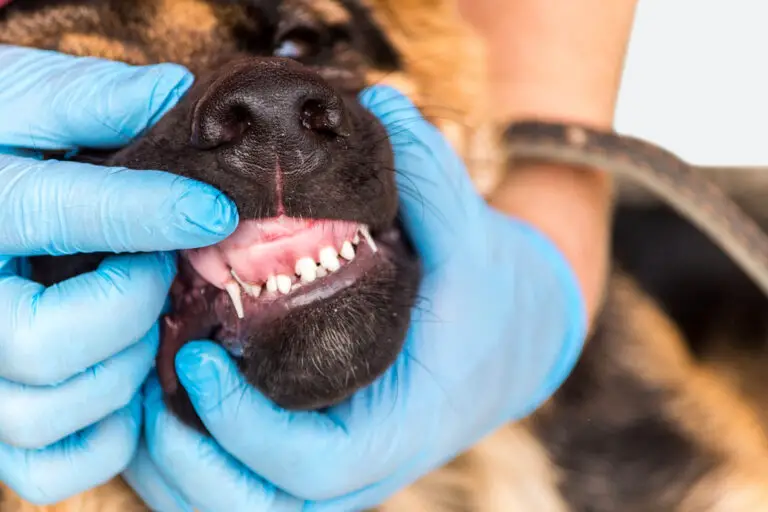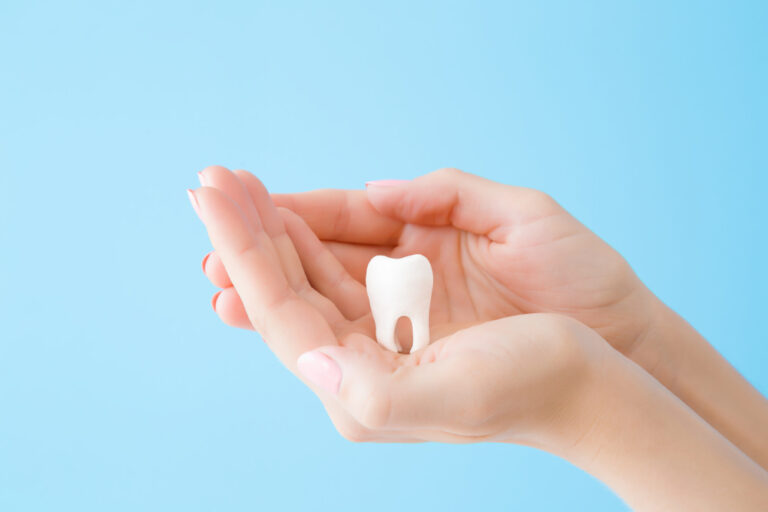It’s very common for the gum around the site of a recent tooth extraction to feel sore, tender or painful for several days or even weeks afterwards. This discomfort and inflammation is an expected part of the normal healing process after a tooth is removed.
The gum tissues, bone, nerves and blood vessels in the area must recover from the minor trauma of the extraction. While the pain can be annoying, slight gum soreness by itself is not an emergency or cause for alarm. It does not necessarily mean something is wrong. However, severe throbbing pain that progressively worsens could signify complications that need dental attention.
What causes post-extraction gum pain?

There are several reasons why the gums typically hurt after a tooth is pulled:
Direct injury to gum tissues
During the extraction, the gums endure inevitable damage. The tools used to loosen and elevate the tooth can bruise, stretch, tear or crush the gum tissues around the socket. This instigates inflammation and pain signals as the gums heal.
If a surgical extraction was performed, the trauma to the gum tissue is more extensive. The dentist may need to cut and flap back portions of gum to access the tooth. This increases soreness compared to a simple extraction.
Exposure of bone and nerves
Once the tooth roots are removed, sensitive nerves within the tooth socket and bone underneath are uncovered. These nerve endings were previously protected and cushioned by the overlying roots and gums.
Direct contact with food, liquids, air or foreign particles now causes these exposed nerves to fire off painful signals as they become irritated. It takes time for the bone and nerve endings to be covered again as the extraction site heals.
Swelling and changes in blood flow
The extraction causes localized swelling due to fluid buildup from inflammation. There may also be some minor bleeding around the tiny blood vessels that previously supplied the tooth roots with nourishment.
This pooling of fluid and changes in blood circulation put pressure on the gum tissues, creating a pulsating, throbbing discomfort. The pressure can become trapped once the initial blood clot forms within the empty socket.
High levels of prostaglandins
These inflammatory compounds are released by damaged cells in response to the surgical trauma. Prostaglandins sensitize pain receptors and nerves, making the surrounding gum tissues extra sensitive and sore. This heightened sensitivity causes even gentle actions like brushing or eating to hurt more.
Infection
If bacteria contaminate the extraction site during or after the procedure, it can lead to an infected socket. This creates severe pain, pus discharge, swelling and fever requiring antibiotics or drainage.
Typical time period for gum soreness after extraction

On average, here’s how long patients experience gum pain after having a tooth pulled:
Day 1 – 3
The gums will be most inflamed, swollen and painful immediately after the extraction procedure and into the first 2-3 days. Significant discomfort is expected during the initial healing stage. Over-the-counter painkillers like ibuprofen are recommended to manage this early pain.
Day 3 – 10
Discomfort often peaks at about 3 days post-extraction as the inflammatory reaction ramps up. The gums should feel very sore and tender. Pain intensity should then slowly start improving with further healing. By days 7-10, moderate gum soreness is still expected but gradually subsiding.
Week 2
In an uncomplicated extraction, lingering sensitivity and minor aching around the healing wound should resolve within the 2nd week after surgery. The gums will look less red and inflamed by this time. Significant pain lasting past 14 days is not normal.
Week 3 – 4
Within 3-4 weeks after a routine dental extraction, all residual gum pain or sensitivity at the site should be completely resolved. Patients usually feel the area has healednormally with no cause for concern.
However, this general timeline can vary. It depends on factors like:
- Number and type of teeth extracted
- Difficulty and trauma involved
- Extensive inflammation or bleeding during surgery
- Patient’s natural healing ability and pain threshold
The dentist can give a better estimate based on your specific case. Contact them if pain seems to be worsening or lasting too long instead of improving.
Is my gum pain normal or a problem?

Mild to moderate gum soreness, sensitivity and tingling is par for the course after having an extraction. But severe or increasing pain can indicate issues that need attention. See your dentist promptly if you experience:
Throbbing or pulsating pain
This suggests inflammation, fluid buildup and pressure on the gums. It should steadily improve with healing. If it progressively worsens or keeps you awake at night, contact your dentist.
Pain triggered by hot or cold
The gums should not be extremely sensitive to temperatures. Lingering thermal sensitivity suggests an irritated nerve or possible infection brewing.
Bad odor from the site
A bad smell indicates bacterial contamination and early stages of infection.
Soreness spreading to ear, jaw or neck
Pain or swelling extending beyond the local region signifies wider infection or inflammation requiring treatment.
Pus discharge
Positive sign of infection. Yellow or green pus draining from the socket means it has become infected.
Fever, nausea, chills
These systemic symptoms paired with worsening gum pain indicates a spreading dental infection. Get seen urgently.
Increased swelling after 5 days
The area should become less swollen with time, not more. New swelling after a week implies problems.
Bleeding
Some minor blood-tinged saliva is expected initially. But heavy bleeding from the socket after 24 hours needs prompt attention.
No closure of the socket
The extraction site should slowly fill in with healing tissue and shrink. If it remains open after 2 weeks this delays proper healing.
Trismus
Difficulty opening the jaw fully due to spasms and muscle tightness also warrants inspection.
Treatment for a sore gum after extraction

Here are some remedies and self-care measures that can relieve post-extraction gum discomfort:
Medications
Anti-inflammatory painkillers like ibuprofen (Advil) or acetaminophen (Tylenol) are effective at reducing inflammation and pain. They can be taken regularly per package instructions in the first 3-5 days when discomfort is most severe.
Topical numbing gels with lidocaine or benzocaine are also very helpful and can be applied directly to the sore gums for quick relief.
Cold therapy
Applying an ice pack or cold compress to the cheek area near the extraction site constricts blood vessels and helps diminish any swelling. Do this for 10-15 minutes a few times a day to ease throbbing and inflammation.
Soft, lukewarm foods
Avoid chewing on the side with the extraction. Consume only soft, non-irritating foods for the first 4-7 days, like soups, smoothies, mashed potatoes, yogurt etc. This allows the gums time to heal without disturbance.
Salt water rinses
Gently swish and rinse your mouth with warm salt water 2-3 times a day. This helps flush out debris and keep the area clean to facilitate healing. Dissolve 1 teaspoon salt in a cup of warm water.
Rest
Get adequate rest and limit strenuous activity for at least 24-48 hours after the extraction. This conserves the body’s energy for the increased demands of healing.
Head elevation
Sleep with your head slightly propped up to minimize pooling of blood and fluid around the extraction site. This reduces throbbing and swelling.
When to see the dentist
Make an urgent appointment with your dentist if you have severe or worsening pain, swelling, bleeding, fever or bad odor. This indicates potential complications like infection, dry socket or abscess needing intervention to avoid bigger problems.
In most cases, the gums will be back to normal within 2-4 weeks. But let your dentist examine the area if pain seems to be lingering too long or worsening instead of improving. Additional treatment can get the extraction site to heal properly and boost your comfort.
Frequently Asked Questions
1. Why are my gums still sore 2 weeks after the extraction?
There are a few possible reasons for gum pain persisting longer than the typical duration:
- Dry socket – This painful condition occurs when the initial blood clot at the site gets dislodged too early, exposing the underlying bone and nerves. Significant throbbing pain then develops 3-5 days post-extraction and keeps increasing continuously. Dry socket delays healing.
- Infection – If the extraction site gets contaminated with bacteria, it can develop into a progressively painful, inflamed infection. Other symptoms like pus discharge, swelling, fever and foul odor are present.
- Bone inflammation – Sometimes the jaw bone around the socket becomes severely inflamed during extraction, especially if substantial drilling or cutting was done. This bone inflammation continues to stimulate pain nerve fibers, causing lingering discomfort.
- Periodontal injury – Trauma to ligaments around adjacent teeth can cause referred pain. Neighboring teeth may be sore and tender for a prolonged period.
- Failed socket closure – If the hole left behind does not close up with gum tissue due to dislodged clot or bone fragment, healing stalls. This leaves sensitive nerve roots exposed.
See your dentist promptly if pain persists longer than expected. The extraction site may need special interventions to clear infection, replace the clot or debride irritants to get proper healing underway again. This provides pain relief.
2. When can I stop taking pain medication after an extraction?
It’s advisable to take over-the-counter oral painkillers regularly for the first 3-5 days after an extraction when discomfort is most severe. You can likely stop taking medication when:
- Pain has reduced to a mild, dull ache rather than constant throbbing
- Swelling has noticeably subsided
- You can eat, drink and brush gently without significant pain
- Discomfort becomes tolerable without round-the-clock painkillers
- 1 week has passed since the extraction
However, if very severe pain continues past 5 days, contact your dentist to determine if prolonged medication is appropriate or if complications need to be addressed. Stop immediately if you have side effects.
3. What foods should I eat when my gums are sore after an extraction?
Stick to a soft, lukewarm food diet while your gums heal after an extraction. Recommended foods include:
- Soups – broth-based, creamy, mashed or pureed
- Smoothies – fruit, vegetable or protein
- Yogurt or pudding
- Oatmeal, grits or cream of wheat
- Mashed potatoes or steamed vegetables
- Scrambled eggs
- Cottage cheese
- Milkshakes or protein shakes
- Apple sauce
Avoid very hot, crunchy, chewy, acidic or spicy foods that could irritate the tender gums. Also, don’t drink alcohol or carbonated beverages until healed.
4. Why do my gums still hurt when I brush gently after an extraction?
After an extraction, even gentle brushing may irritate the gums and cause some pain or sensitivity due to:
- Exposed nerve endings in the tooth socket and surrounding bone
- High levels of inflammatory mediators that sensitize nerves
- Gum tissue being swollen and loose around the socket
- Food debris getting trapped and causing inflammation
- Loss of periodontal support previously provided by the tooth roots
- Infection or dry socket impairing healing
Go very softly when brushing nearby the extraction site. Avoid disturbing any scabs or clots. The tissues will toughen up again as healing progresses. See your dentist if brushing remains too painful after 2 weeks.
5. When should I see a dentist for gum pain after an extraction?
You need urgent dental attention for gum pain after an extraction if you have:
- Severe constant pain not relieved by medication
- Fever, nausea, bad odor from the site
- Excessive throbbing and swelling
- Difficulty opening your jaw due to muscle spasms
- Heavy bleeding from the socket after 24 hours
- Increased swelling 5+ days after the extraction
- No closure of the socket after 2 weeks
- Lingering sensitivity to hot and cold temperatures
- Pus discharge from the extraction site
These symptoms likely indicate an issue like dry socket, abscess or spreading infection. Prompt treatment is important to resolve the problem, ease your discomfort and prevent more serious complications. Don’t wait with worsening post-extraction pain.
Conclusion
Mild gum soreness is expected after a tooth extraction as the area heals over the next 1-2 weeks. Using conservative remedies can alleviate normal post-op discomfort. However, severe or progressive pain warrants an urgent dental visit to identify and manage any complications that may be impeding proper healing. Stay vigilant and follow up with your dentist if pain seems abnormal.






